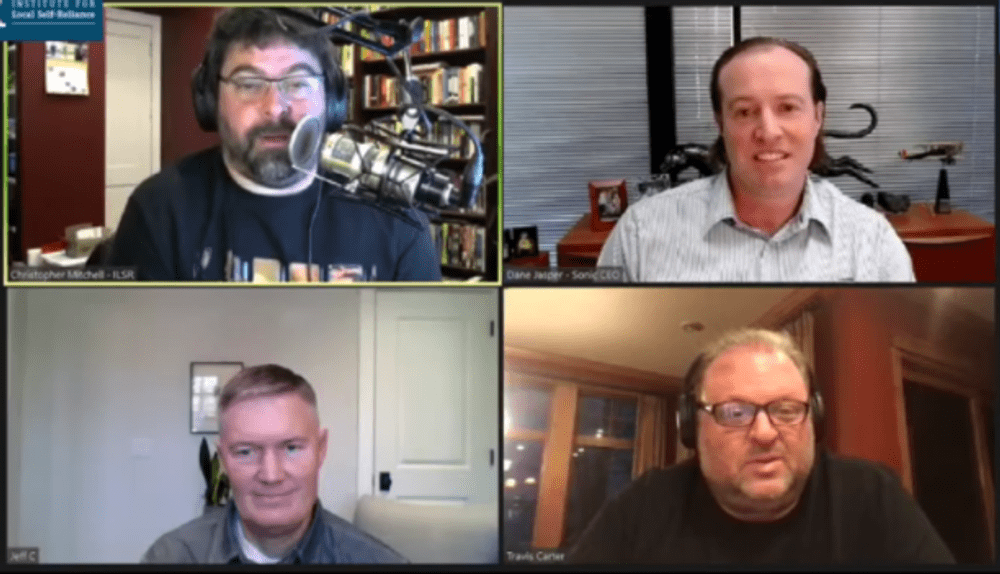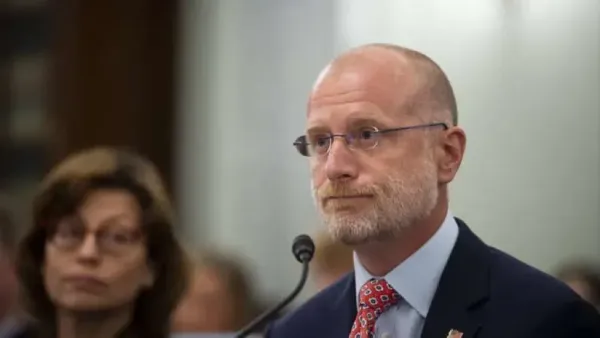Differences in Approach to Open Access Showcased in Discussion About Lit and Dark Municipal Fiber
December 6, 2020 — Panelists involved in open access networks across the United States got into a fiery debate over the best model to follow when constructing an open access network. The exchange occurred during Thursday’s episode of Connect This!, a series sponsored by the Institute for Local Self-
Jericho Casper

December 6, 2020 — Panelists involved in open access networks across the United States got into a fiery debate over the best model to follow when constructing an open access network.
The exchange occurred during Thursday’s episode of Connect This!, a series sponsored by the Institute for Local Self-Reliance and moderated by Christopher Mitchell, director of the group’s community broadband network initiative.
The panelists agreed that cities should be able to build and own their own fiber networks and that something must be done about legislation in place in 22 states that impeded, to varying degrees, forms of municipal-owned broadband.
But they disagreed sharply over whether it is the role of cities to light fiber, or provide service over, the fiber networks they build.
Dane Jasper, CEO and co-founder of Sonic, Northern California’s largest independent internet service provider, called for emerging networks, often materializing to solve issues relating to bad internet, limited choices, and poor customer service, to copy successful open access models.
“I’ve seen a vast majority of cities be convinced by salespeople that they need to light their own networks,” effectively acting as the internet service provider, said Jasper. Instead, he recommended that cities invest in dark fiber network assets and then invite ISPs to light them.
“UTOPIA Fiber’s model has worked,” said Jasper, championing the model of the largest open access network in the United States. The network, which is based in about a dozen cities in Utah, currently has more than 15 providers offering service.
Software-provisioned open access networks
“The difference between us and UTOPIA is that right now UTOPIA has a manual open access network,” said Jeff Christensen, President of EntryPoint Networks, who detailed the specific type of software-powered open access network he said drove powered the successful open access network in Ammon, Idaho.
Ammon partnered with EntryPoint to build a software-defined, automated open access network. Christensen said the city utilizes a radical definition of “open access,” saying that the network is open in the sense that it “is a set of resources open to innovation and open to subscribers putting what they want into the network.”
In this particular open access model, the network’s subscribers independently pay for the infrastructure, the maintenance and the operation of the network, and the network’s service provider. The city of Ammon manages the customer experience, although Christensen noted that because of the resiliency and quality of the network, “with this network you’re not going to get many calls.”
EntryPoint provides an automated interaction between the network’s subscribers and service providers, using software-defined networking technology. The automation further helps pinpoint issues within the network and helps maintain transparency to the subscriber, he said.
Critical reactions from other innovative providers
Jasper and Travis Carter, CEO of U.S. Internet, whose company utilizes a more traditional and vertically-integrated approach to offering access and service, cast doubt on the Ammon model throughout the conversation.
“There may be future innovation that requires Layer 2,” or the data link layer of the Open Systems Interconnection model, said Jasper, referring to the increased innovation EntryPoint promises, “but I’m skeptical.”
Carter said he would not want to rely on the city to manage his personal internet network, noting that he has had a pothole outside his house for two years that the city is supposed to fix.
Carter also said there was a problem in how easy it is for internet service providers to register to offer services on Ammon’s network with EntryPoint’s automated software.
As long as an individual has “some level of sophistication” they are going to be able to connect to EntryPoint’s software relatively easily, and hence offer services to subscribers on the network, agreed Christensen.
Carter noted that a single ISP could rather easily dominate the market by undercutting existing competitors. This is “precisely what happened with dial-up,” said Carter. All providers “came in charging $19 a month and one company came in at $9, and up-heaved the whole market.”
“Fiber-to-the-premise networks themselves are actually very simple, yet the Ammon model adds unnecessary complexity,” said Jasper.
Mitchell jumped in to defend EntryPoint, saying the network design will lessen ISP market power and give subscribers increased capabilities. “We are going to see innovative things only possible on this type of network,” said Mitchell.
But the panelists all agreed on the importance of present consumers with better internet service options.










Member discussion